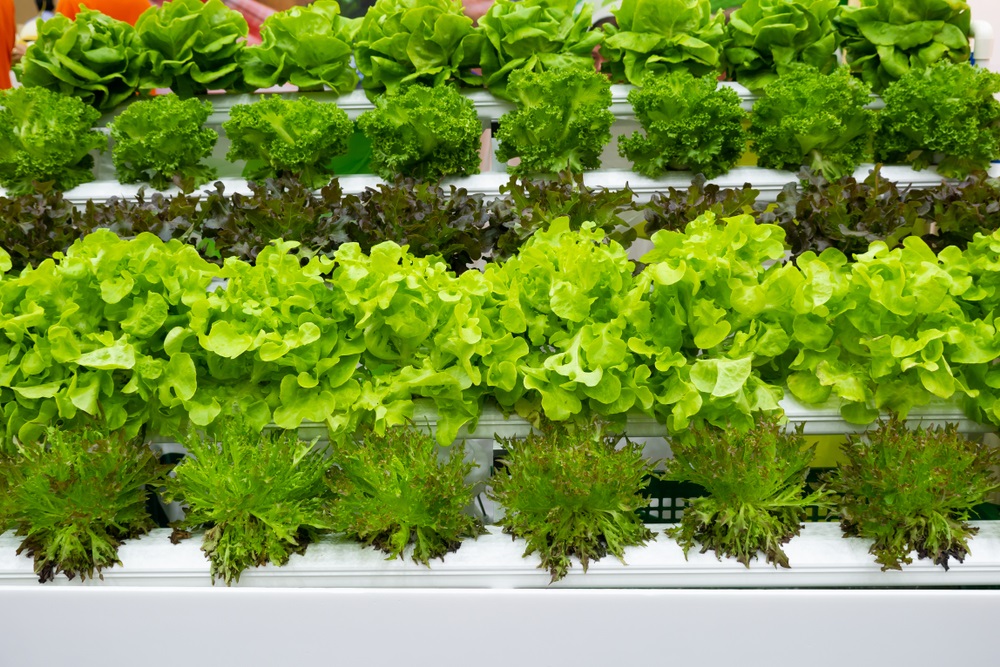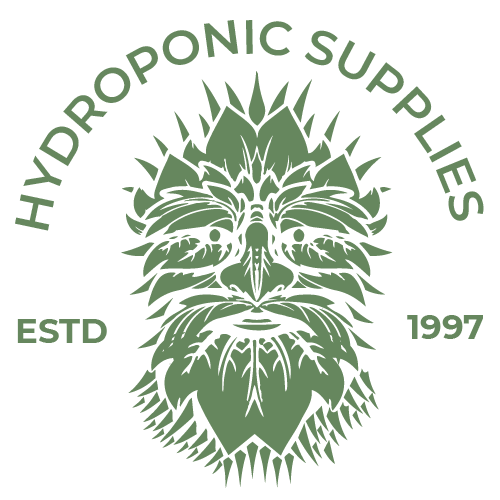
Many individuals now like growing their plants. A gardening technique that has grown in popularity recently is hydroponics. Hydroponic gardening is a soilless technique for growing plants that uses nutrient-rich water instead of soil called hydroponics.
Urban farmers, commercial producers, and recreational gardeners alike are all quickly adopting the hydroponic garden technique.
As a beginner hydroponic garden hobbyist, you must wonder as,
“What plants are best to grow hydroponically?”
You can probably grow anything, is the likely response. We will examine the top 5 best plants for hydroponics systems in this blog post.
Why Hydroponic Gardening Is the Best
- Best For Small Spaces: One of hydroponics’ main benefits is that it conserves space. Plants may be grown without a vast yard or even a balcony. An indoor hydroponic garden may be set up in a small area.
- Conserves Water: Water conservation is another advantage of hydroponics. 90% less water is used by hydroponic systems than by conventional growing techniques.
- Soilless System: Hydroponics Garden does not require soil, which can serve as a breeding ground for insects and infections. Plants are instead grown in a nutrient-rich fluid.
- Year-Round Garden: Indoor Hydro Garden makes it possible to grow plants all year round, regardless of the season. Thus, even in the middle of winter, you may have access to fresh vegetables.
3 Main Factors For Healthy Plant Growth In Hydroponic Systems
There are numerous key considerations for hydroponic gardening to bear in mind to guarantee healthy plant development. Here are the top three things to think about.
1. pH Levels
Hydroponic plant development depends on maintaining the proper pH level. A plant’s capacity to absorb nutrients may be hampered by an excessively high or low pH level, which may result in stunted growth, nutritional shortages, and even death.
It’s critical to routinely monitor the pH of the nutrient solution and make any necessary pH-up or pH-down adjustments.
2. Nutrient Solution
Hydroponic plants, in contrast to plants grown in soil, rely on nutrient-rich solutions to supply all of the nutrients required for growth.
It’s crucial to choose the appropriate nutrient solution for the kind of plants you’re cultivating in your hydroponic garden and to routinely check the nutrient levels. Both overfeeding and underfeeding can have a detrimental impact on the development and health of plants.
3. Growth Requirements (Light & Temperature)
Understanding the needs of the particular plants you are cultivating in a hydroponic garden is crucial, as is making sure they have the right lighting, temperature, and fertiliser solution to promote their development.
To get the most production possible, it’s also critical to routinely check on the plants and harvest them at the right time.
5 Best Plants For Hydroponics
You could assume that even if you like the concept of having a regular garden, you can’t have one since you don’t have an outdoor area.
A regulated atmosphere and high-quality crops may both be grown in a hydroponic garden. You may make a hydroponic garden that is appealing and sustainable by choosing the appropriate plants.
Hydroponic herbs, vegetables, and house plants may all be grown in the indoor hydroponic garden
in addition to many other widely produced outside plants.
1. Lettuce
- Temp: cool.
- pH: 6.0 – 7.0
The most typical vegetables produced in hydroponic systems are likely lettuces, which are a delicious part of the salad you make at home. Due to its quick growth and great output, lettuce is one of the plants that hydroponic systems are most commonly used for.
They grow quite quickly in a hydroponic setup and are relatively simple to care for. Any hydroponics system, such as the NFT, Aeroponics, Ebb & Flow, etc., may be used to grow lettuce. If you simply begin with a hydroponic garden, this vegetable is without a doubt a superb plant.
2. Tomatoes
- Temp: hot
- pH: 5.5 – 6.5
Another common crop grown in hydroponic systems is tomato. Both commercial and hobbyist hydroponic gardeners have produced a variety of tomatoes, including cherry and conventional varieties.
Since tomatoes can be cultivated all year round, professional producers find them to be a lucrative crops due to their high production. One thing to remember is that tomatoes need a lot of light. So if you want to grow inside, be prepared to buy some grow lights for your tomato hydroponic garden.
3. Herbs
- Temp: warm to hot.
- pH: 5.5 ─ 6.0 (Varies by plant)
Herbs are aromatic plants that are frequently used in cooking and are hence a preferred option for hydroponic systems. Basil, chives, mint, and parsley are just a few examples of the best herbs to grow in hydroponics systems.
Hydroponic herbs may be cultivated all year round, take up very little area, and are simple to grow. Just picture having access to fresh herbs anytime you want them. That could alter both the flavour of your meals and the amount of nutrients in the foods you make.
- Chives: The hydroponic technique makes it simpler to cultivate chives from seed. It takes between six and eight weeks for it to reach full maturity under ideal growth conditions. After that, you may frequently harvest it, and it takes 3 to 4 weeks for it to fully regenerate.
- Basil: Basil is one of the most popular herbs planted in hydroponic systems because it does great there. Basil may be grown using a drip or NFT technique. Weekly harvesting and trimming are required after the plant reaches the mature stage.
- Mints: Peppermint and spearmint have been cultivated in hydroponic systems extensively. Their aromatic components have a pungent and refreshing flavour. Mint is perfect for hydroponic growth since its roots spread so fast.
4. Strawberries
- Temp: warm
- pH: 6.0
Popular fruit strawberries are frequently cultivated in conventional soil-based gardens. But strawberries also do well and are a good fit for a hydroponic garden. These fruits are one of the most widely produced plants in industrial hydroponic production.
When compared to soil-grown strawberries, hydroponic strawberries frequently produce bigger, sweeter fruit. By cultivating strawberries at the home hydroponic garden and picking fruits all year long, you may continue to enjoy delectable fresh strawberries to serve your entire family.
5. Peppers
- Temp: warm to hot
- pH: 5.5 – 6.0
Due to their tiny size and ease of cultivation in limited space, peppers do well in hydroponic systems as well. The same hydroponic growth requirements for peppers as for tomatoes include a warm environment and a lot of lighting. It typically takes peppers two to three months to mature.
You have the option of starting them off with seeds or seedlings from your neighbourhood garden centre. Jalapeno and Habanero peppers are suggested varieties for hydroponic garden cultivationwhereas Mazurka, Cubico, Nairobi, and Fellini peppers are suggested as sweet peppers varieties.
Ready To Get Started On A New, Greener Way Of Gardening!
It would be wise to choose plants that are simple to care for and are quickly grown as a beginner to hydroponics. Fast results and learning tries might motivate you to go on to more challenging plants.
Are you searching for the best “hydroponics near me” along with the right “hydroponic supplies” to get started on your indoor hydro garden?
The best way to start would be with an excellent and simple-to-follow hydroponic starter kit with hydroponics supplies from a local hydroponic grower.
Happy growing!
